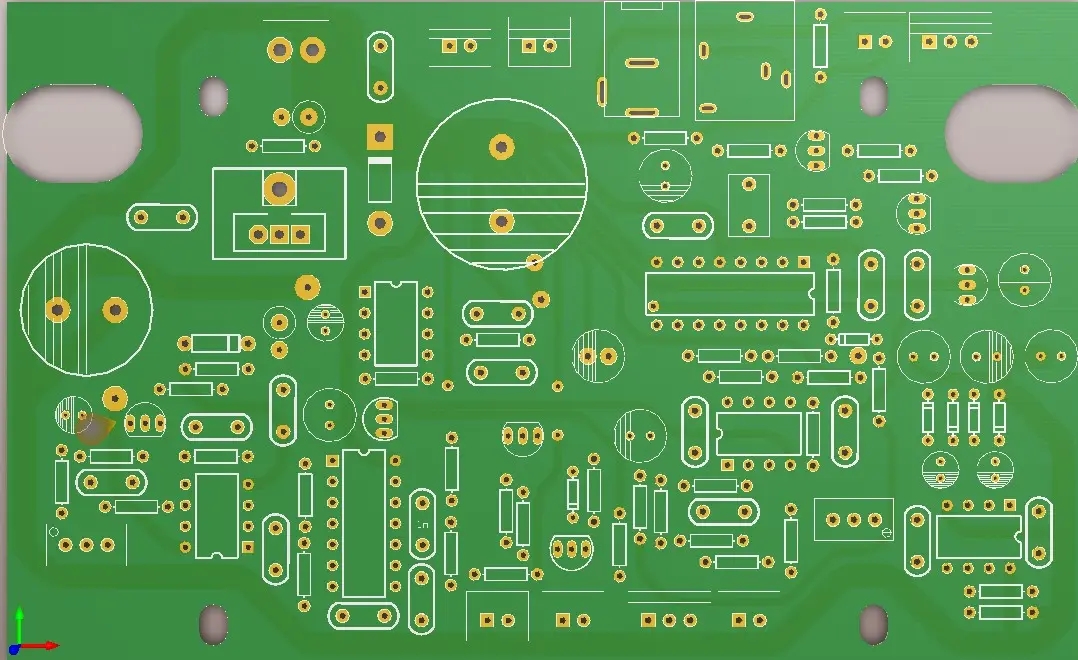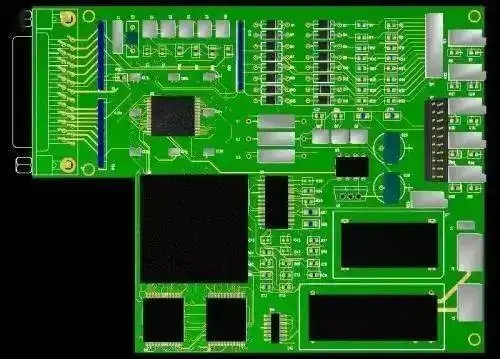
PCB manufacturers offer you PCB layout and routing skills Q 2
Now, although there are many software that can realize PCB automatic layout and routing. However, as the signal frequency continues to increase, in many cases, engineers need to understand the basic principles and skills of PCB layout and wiring to make their design perfect.

26. Question: What are the differences in the design of ground wire between analog circuit and digital circuit in PCB design? What problems should we pay attention to?
Answer: The main requirements of analog circuit to ground are integrity, small loop and impedance matching. If there is no special requirement for low frequency digital signal; If the speed is high, impedance matching and ground integrity should also be considered.
27. Question: Generally, there are two decoupling capacitors, 0.1 and 10. If the area is tight, how to place two capacitors? Which is better to place the back?
Answer: It should be designed according to specific applications and specific chips.
28. Question: Teacher, IQ signals often appear in RF circuits. Do you need the same length of these two lines?
Answer: Try to use the same in RF circuits.
29. Question: Is the design of high frequency signal circuit different from that of ordinary circuit? Can you give a brief explanation by taking wiring design as an example?
Answer: High frequency circuit design should consider the influence of many parameters. Under high frequency signals, many parameters that can be ignored by ordinary circuits cannot be ignored, so transmission line effects may be taken into account.
30. Question: How to deal with the avoidance of vias in high-speed PCB wiring? What are some good suggestions?
Answer: High speed PCB, less vias, and the need to increase vias can be solved by adding signal layers.
31. Question: How to select the thickness of power supply wiring in PCB design? Are there any rules?
Answer: Reference: 0.15 × Line width (mm)=A, copper thickness also needs to be considered.
32. Question: When digital circuit and analog circuit are on the same multilayer board, should analog ground and digital ground be arranged on different layers?
Answer: This is not necessary, but analog circuits and digital circuits should be placed separately.
33. Question: How many vias are appropriate for digital signal transmission? (Signals below 120Mhz)
Answer: Do not exceed two vias.
34. Question: In the circuit with both analog and digital circuits, how to avoid mutual interference in PCB design?
Answer: If the analog circuit is matched reasonably, the radiation is very small, and it is generally interfered. The interference source comes from the device, power supply, space and PCB; Digital circuits must be interference sources because they have many frequency components. WeChat search official account plays embedded.
Generally, the solution is to make reasonable device layout, power decoupling and PCB layering. If the interference characteristics are large or the analog part is very sensitive, shielding cover can be considered.
35. Q: For high-speed circuit boards, parasitic parameters may exist everywhere. Facing these parasitic parameters, should we eliminate them or adopt empirical methods to solve them? How should we balance this issue of efficiency and performance?
Answer: Generally speaking, it is necessary to analyze the influence of parasitic parameters on circuit performance. If the influence cannot be ignored, it must be solved and eliminated.
36. Question: What should be paid attention to in the multilayer board layout?
Answer: In the multilayer board layout, because the power supply and stratum are in the inner layer, it is important to pay attention not to have a suspended ground plane or power supply plane. In addition, it is necessary to ensure that the vias punched on the ground are indeed connected to the ground plane. It is necessary to add some test points for some important signals to facilitate measurement during commissioning.
37. Q: How to avoid the crosstalk of high-speed signals?
A: You can keep the signal lines far away from each other, avoid parallel lines, and play a shielding role by paving the floor or adding protection, etc.
38. Question: The power plane is often used in the design of multilayer boards, but is it necessary to design a power plane in a double-layer board?
A: It's very difficult because you have almost all kinds of signal lines in the double-layer layout.
39. Question: Does the thickness of PCB affect the circuit? How are they generally selected?
Answer: Thickness is important for impedance matching. PCB manufacturers will ask how much the impedance matching is calculated when the thickness is. PCB manufacturers will make it according to your requirements.
40. Question: The ground plane can make the signal loop, but it also generates parasitic capacitance with the signal line. How should we choose?
Answer: It depends on whether the parasitic capacitance has a non negligible effect on the signal. If it cannot be ignored, it should be reconsidered.
41. Question: Is the LDO output a digital power supply or an analog power supply? Which one is better to connect the digital power supply to the analog power supply first?
Answer: If you want to use an LDO to provide power for digital and analog, it is recommended to connect the analog power supply first. The analog power supply is a digital power supply after LC filtering.
42. Question: Should magnetic beads be used between analog Vcc and digital Vcc, or should magnetic beads be used between analog ground and digital ground?
Answer: Analog VCC gets digital VCC after LC filtering, and magnetic beads are used between analog ground and digital ground.
43. Question: How to route LVDS differential signal lines?
Answer: In general, it should be noted that all wiring, including the placement of surrounding devices and the ground plane, should be symmetrical.
44. Q: A good PCB design needs to minimize the emission of electromagnetic radiation and prevent external electromagnetic radiation from interfering with itself. What measures should be taken to prevent external electromagnetic interference?
Answer: The method is shielding to prevent external interference from entering. On the circuit, for example, when there is an INA, an RFI filter should be added before the INA to filter the RF interference.
45. Q: How to solve the problem of transmission line effect in PCB design when using high-speed integrated circuit chip with high clock frequency?
A: What is this fast integrated circuit chip? If it is a digital chip, it is generally not considered.
If it is an analog chip, it depends on whether the transmission line effect is large enough to affect the performance of the chip.
46. Question: In a multi-layer PCB design, does copper coating still need to be used? If copper coating is used, which layer should it be connected to?
Answer: If there is a complete ground plane and power plane inside, the top and bottom layers can be copper free.
47. Question: When designing high-speed multilayer PCB, how to conduct impedance simulation and what software is used? Do you have any special problems to pay attention to?
Answer: You can use Multisim software to simulate the resistance capacitance effect.
48. Question: Some devices have thin pins, but the wiring on the PCB is thick. Will the connection cause impedance mismatch? If so, how to solve it?
Answer: It depends on what the device is. The impedance of the device is generally given in the data manual, which has little to do with the size of the pin.
49. Question: Generally, the difference line needs to be of equal length. If it is difficult to realize in LAYOUT, are there any other remedial measures?
A: You can solve the problem of equal length by following the serpentine line. Now most PCB software can automatically follow the equal length line, which is very convenient.
50. Q: When using a multimeter to measure the analog ground and digital ground interfaces of the chip, there is continuity, so the analog digital ground is connected at multiple points?
Answer: The ground pins inside the chip are connected together. However, it still needs to be connected on the PCB. The ideal single point grounding should be to understand the connection point positions of analog and digital parts inside the chip, and then design the single point connection positions on the PCB at the analog and digital boundary points of the chip.






